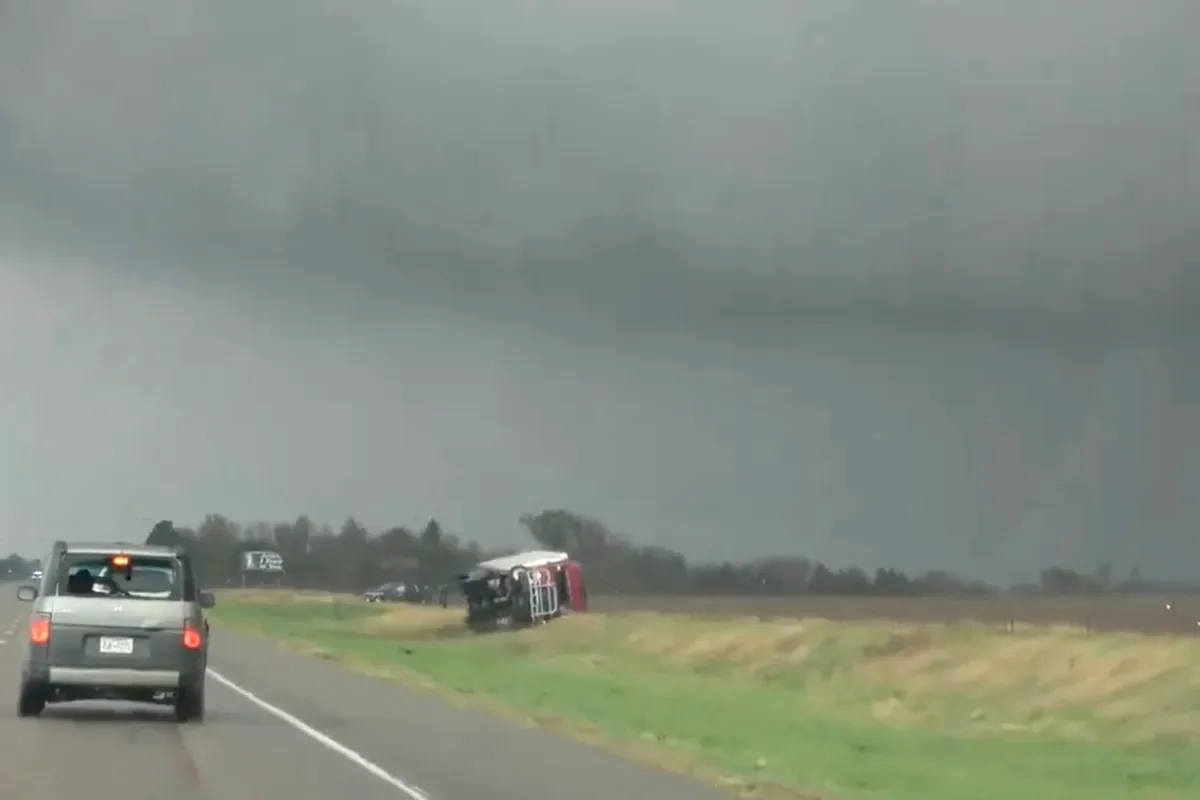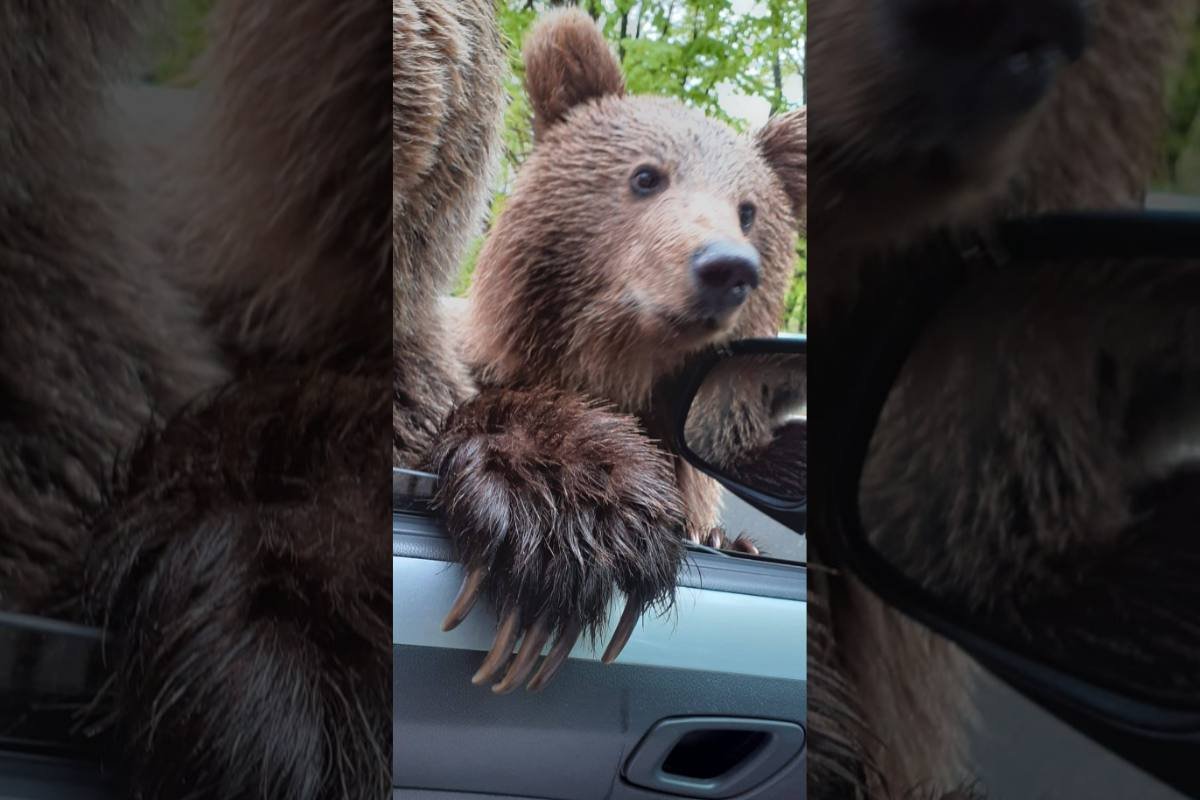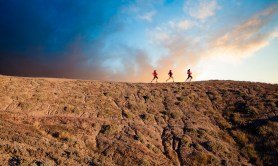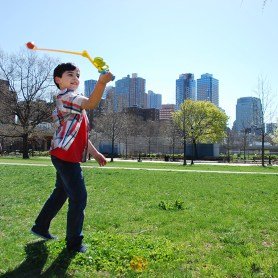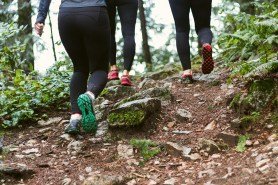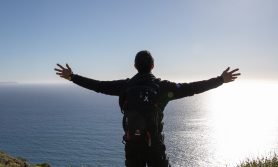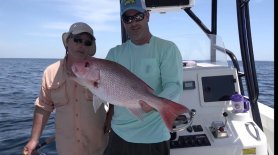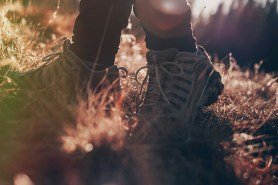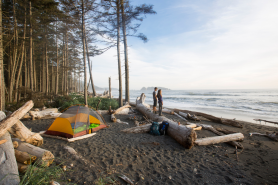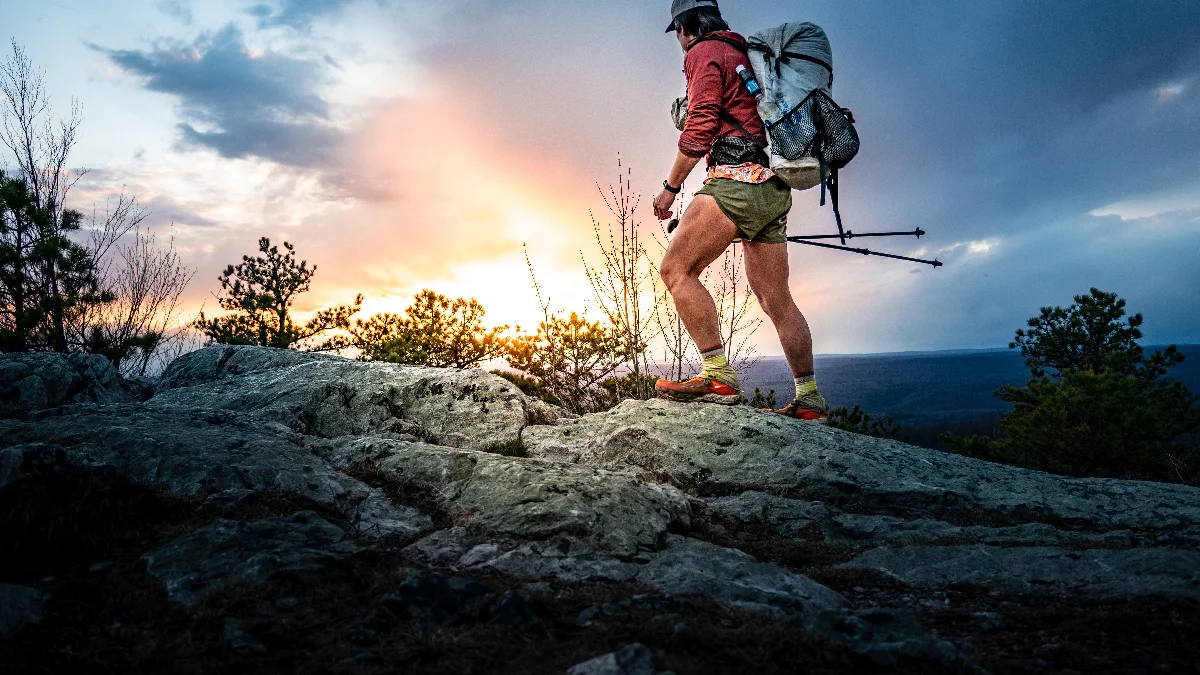

Jack Jones, also known as Quadzilla, is one of the most accomplished thru-hikers out there. In 2022, he took on a rare challenge known as The Calendar Year Triple Crown. He hiked 7,400 miles in 12 months on three iconic trails: The Appalachian Trail (AT), the Continental Divide Trail (CDT), and the Pacific Crest Trail (PCT). Only a few hundred people have ever completed these three trails in their lifetime. Far fewer have ever done it in a single year. For Quadzilla, this was a crowning achievement on top of an accomplished life in the outdoors.
Born in China, Quadzilla came to the U.S. when he was eight. After growing up in Missouri and attending college there, he pursued a career in accounting. He joined the Army National Guard and tried out crossfit along the way, but he found himself asking a question. What did he really want from life? He found the answer was that he wanted to go on adventures and make documentaries about them. This led him onto the Appalachian Trail for the first time in 2016.
2018 found him biking from Mexico to Canada along the Arizona Trail (AZT) and the Pacific Coast Highway (PCH). In 2020, he spent a season wildland firefighting, working 14-16 grueling hours a day. Hiking the PCT in 2021, he was pushing 30-35 miles a day and feeling good mentally and physically. He did a 100-mile race after that thru-hike, and found his physical fitness allowed him to dream even bigger. That led him to the Calendar Year Triple Crown.
He has recently embarked on new journeys out East. We caught up with Jones for a Q&A while he was living in Thailand to talk thru-hiking and more.
This interview has been edited for brevity and clarity. Every effort has been made to preserve the original language.
Outdoors.com: What was it that brought you to the AT?
Quadzilla: My girlfriend at the time actually found Bill Bryson’s book, and then I read the book, and then 45 days after reading the book, I was hiking the trail. So before that I hadn’t really known about it. I think I’d heard of the Colorado Trail years before. It’s kind of funny, because I’d heard about that one, and it was 500 miles, and that was like, oh, that’s crazy. How can you hike 500 miles?
And yeah, I remember a conversation with a friend at the time, I was like, that would be cool. And their response was literally, “You’ll die if you do that. If you try to hike 500 miles.” So I wasn’t aware of the Appalachian Trail until right before I did it. But yeah, that was crazy to learn that there’s this 2,000+ mile trail.
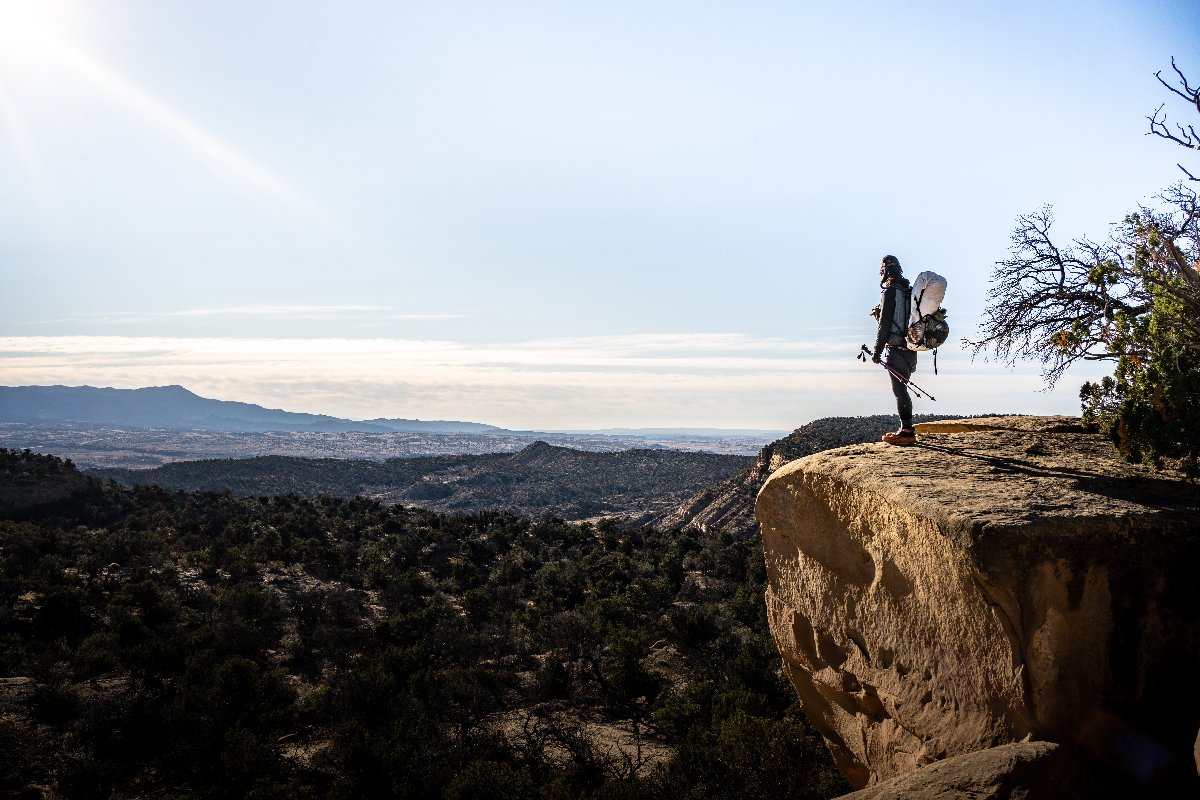
Outdoors.com: How did you ramp up then into the Calendar Year Triple Crown? How’d that idea enter your mind?
Quadzilla: [My] first time on the AT [in 2016], once it got to the afternoon, I’d be really dragging. So by four or five o’clock, I was done. My feet hurt really bad, I just wanted to get to camp. But then, contrast that to 2021 where I was fine hiking into the night, hiking 14, 16 hours a day every day and then capping it off with that race.
Oh, and then a week after that [hundred-miler], I expected I’d be laid up forever, like legs not working for a couple weeks after the hundred miler, but within three days after, I was feeling okay. And then a week after it, we were able to go run the rim to rim to rim in the Grand Canyon with another friend, and that was like 44 miles and 11 or 12,000 feet of elevation gain and loss. And so yeah, that’s about a 12-hour ultra. So that was just really eye-opening to me. My fitness has really gotten to a pretty high level. And then it was just this thought of, well, if it’s at this level, what kind of challenge can I meet with it?
And that was how I landed on The Calendar Year. The other component was, I’d been doing a lot of meditating, meditation, and meditation retreats, and really practicing this idea of equanimity. And that was the other half. Like, hiking for days at a time and it’s not a big deal. It’s not this mentally draining thing anymore. And that was the other component where it’s like, well, what’s a big crazy thing that you can do to test your physical and mental limits, and Calendar Years? Yeah, it’s the biggest challenge like that exists that I’m aware of.
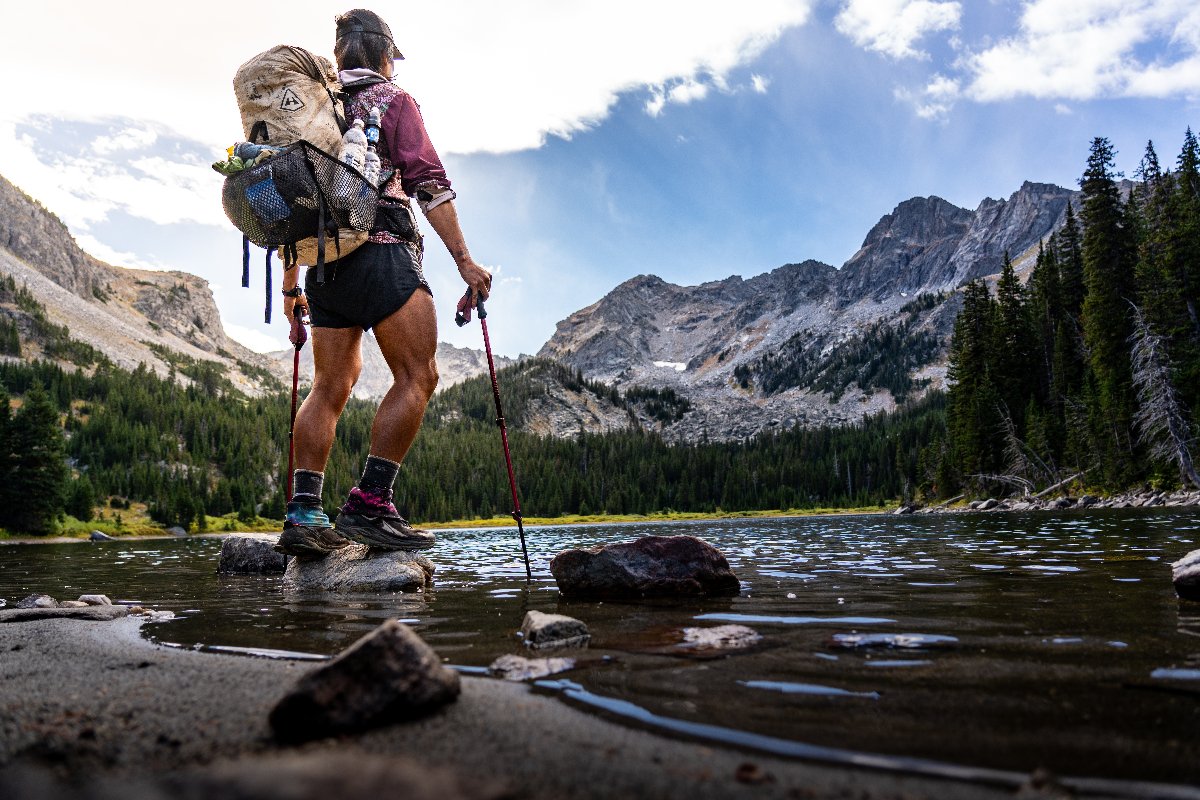
Outdoors.com: I’m really interested in active meditation in thru-hiking. Would you be willing to talk about that?
Quadzilla: I really think that meditation and then thru-hiking is a really powerful combination, because when you talk about normal life, “normal life,” it’s really easy to get lost in distractions. And it’s much more difficult, in my opinion, to be mindful when you’re sitting at a computer screen or you’re in conversation with people or all these things in normal life, I think they just kind of use up your attention much more fully versus being on the trail. You’re walking, there’s just less distractions. And so it’s easier to be present and not have your entire attention taken away by something. And then also the trail just has all of these different discomforts that we’re not facing in day-to-day life, especially physical discomforts. I think it’s a really good way to practice with it because that physical discomfort is another thing that helps keep you grounded and present.
It’s different than a mental stressor, and on the trail you’re all day in some sort of discomfort. And then that’s a way or a vehicle that allows you to practice that equanimity, so you can then be okay and non-reactive to the cold that you’re experiencing or the hunger or the burning in your legs, or the heat, the sun, whatever it is. The trail offers you this continuous opportunity to practice while giving you enough space that you can be present and aware.
I think that [active meditation] really accelerated my progress, because I genuinely do suffer a lot less now, and I’m able to just catch these thoughts in the mind and these habit patterns a lot faster. Just because I’ve spent months and months and months on the trail, practicing every time. If I feel pain, then being aware of that pain and that sensation and not being reactive to it, and that really carries over. So yeah, I think the two are a really powerful combination.
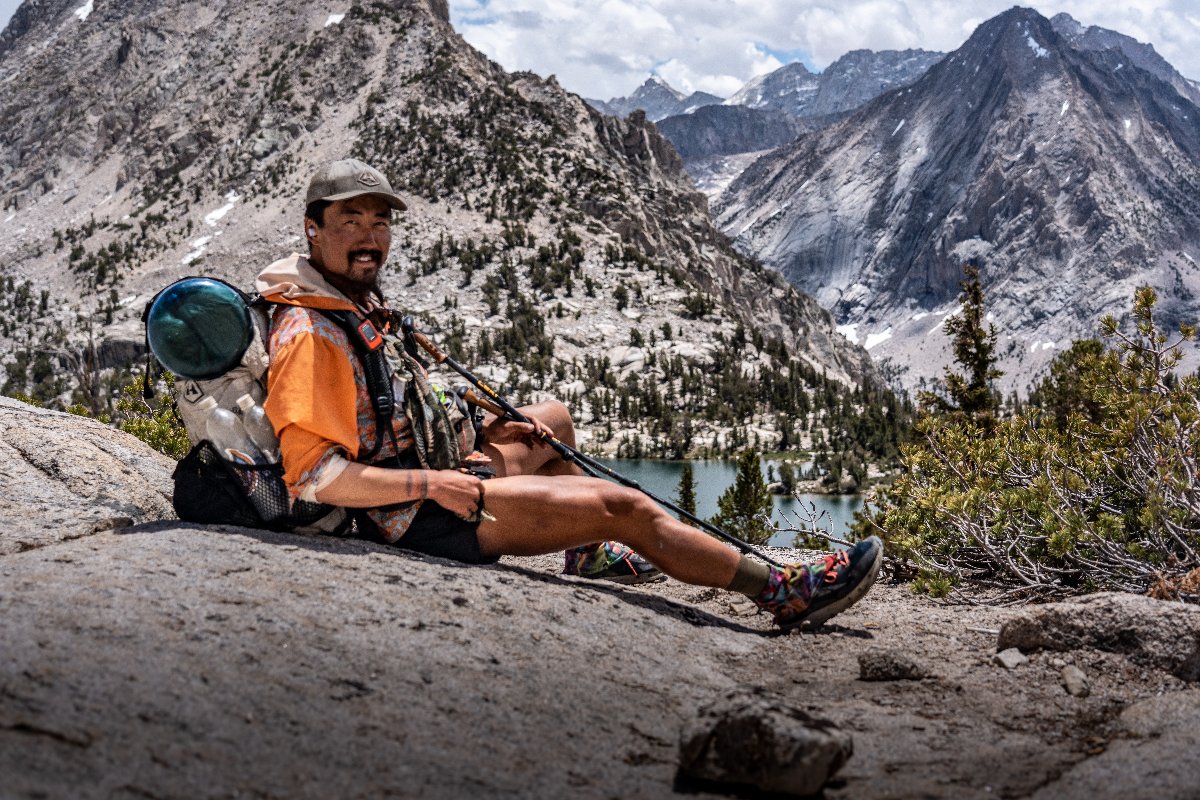
Outdoors.com: Would you recommend mindfulness in tandem with thru-hiking as a processing tool for people?
Quadzilla: Yeah, and I think it’s important for people to have some tools before they start their hike. Whether it’s meditation, mindfulness, or some tools from therapy or just whatever they find that works for them. But, to have tools, because what happens on a thru-hike is you give yourself space and time for emotions and thoughts to bubble up to the surface. We’re not so distracted anymore, because that’s the thing in normal life, where we’re just constantly distracting ourselves with work or internet or TV or anything else, just so that we are not having to experience these uncomfortable emotions and sensations.
Especially because a lot of times people will go on their hike because there’s some event in their life or some things where it’s kind of pushed them to a point where [they] need a change. And so if you’re at that point and you get on the trail, and then all of a sudden you have this space, all of these thoughts and emotions are going to bubble up to the surface.
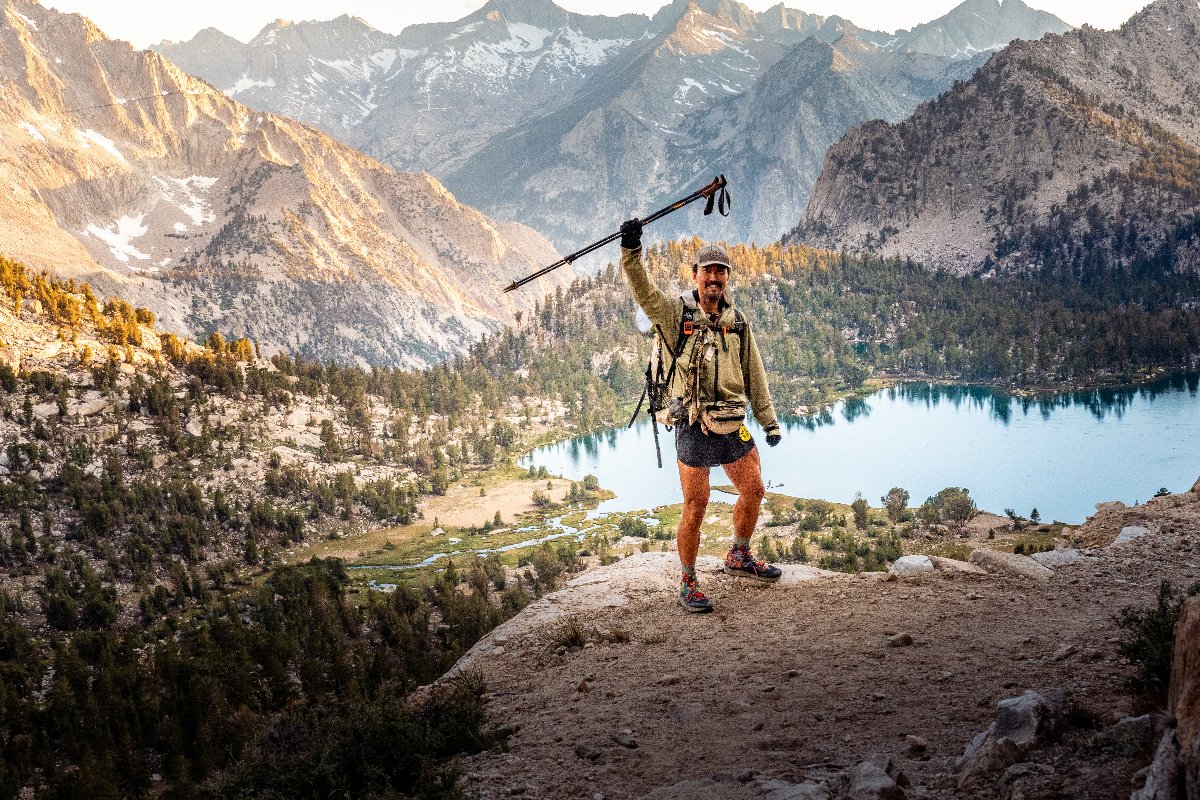
And it’s not a guaranteed thing. It’s not this natural or guaranteed solution. I mean, worst-case scenario, it could drive you kind of mad and drive you into psychosis. Because you’ll see–it’s not very common, but people do have mental breaks and stuff at retreats and on trail as well. You see people just breaking down. If you don’t have the tools to process what’s coming up, it might not be helpful to just be with these intense emotions all day.
And I experienced that a little bit my first time on the AT. I did my first retreat in 2017, but I hiked the AT in 2016. So I had lots of different sorts of anger and these other emotions come up, and I didn’t have any tools to deal with it, so they just kind of rolled around in my mind all day. So I might just be angry for a whole day hiking and angry the next day, and it didn’t resolve anything by the end of my hike. I think I might’ve been even more angry at the end, just because I spent the whole hike being angry about this thing. And so that wasn’t helpful.
I think people have this idea that you’ll go into the woods and then that’ll fix everything, but that’s not necessarily the truth.
Jack “Quadzilla” Jones
So I think people have this idea that you’ll go into the woods and then that’ll fix everything, but that’s not necessarily the truth. Being on trail in the woods will give you space for these emotions to come up. But now when they come up, you have to have the toolkit to actually process and deal with them. And I think this meditation practice is a really great tool to actually process and resolve them, but without some sort of tool, I think it could just multiply whatever disturbances are in your mind and it could make things even worse.
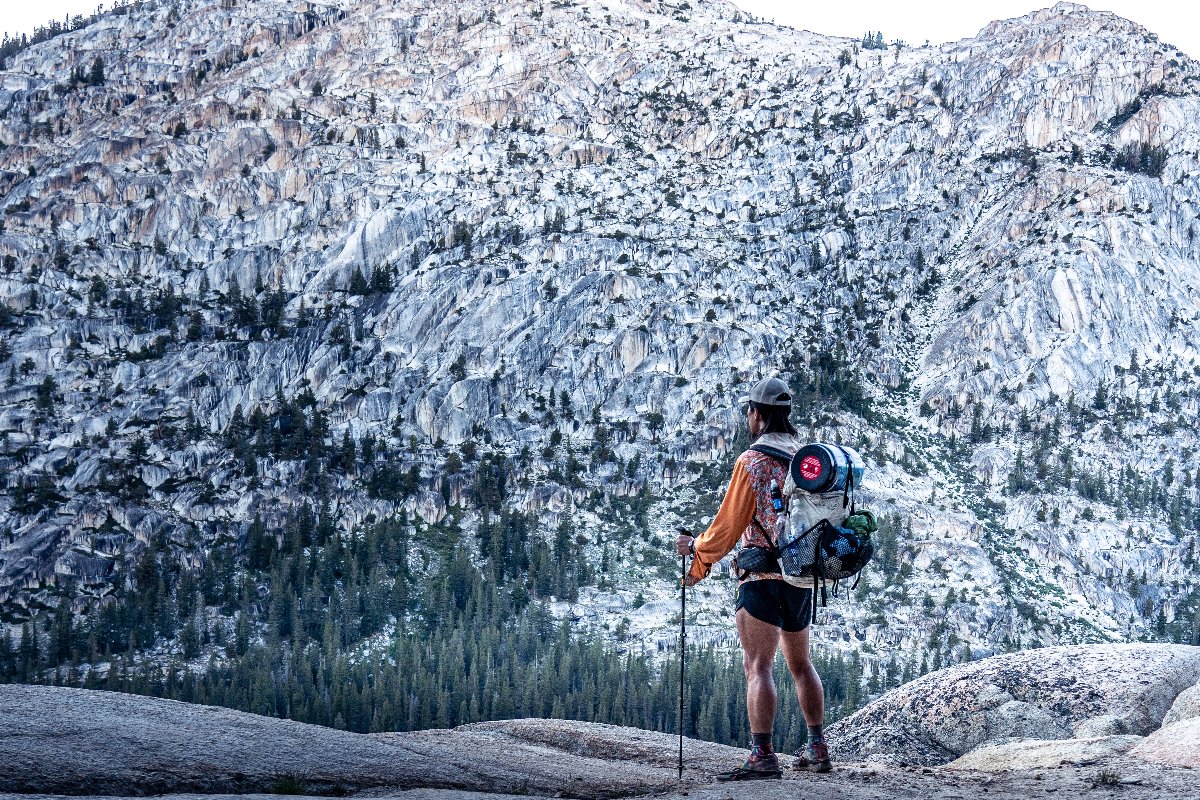
Outdoors.com: I should ask you too about your lived experience of the Calendar Year Triple Crown. I know it’s impossible to fit that entire experience into a single conversation, but do you want to take me through moments that have stuck with you?
Quadzilla: Yeah, so let’s see. I think for me, the Appalachian Trail almost was the entire Calendar Year Triple Crown. That’s what I think about when I think about The Calendar Year. I think when I started the AT, I was much more uncertain about how I would do and what the year would look like, and I just pushed much harder than the other two trails. And the AT just is a more difficult trail in terms of elevation gain and loss.
And then the time of year I went through. I started, I think February 16th, and so you’re still in winter time. And there wasn’t too much snow and ice, but a couple blizzards down south where it’s super cold and water bottles are freezing even though I have them inside my clothes next to my body. The trail is challenging, but when you add in the element of really cold weather, it makes it extra challenging.
That was my big question going into it. I had hiked, I think 6,500 miles, before doing The Calendar Year, and I’ve experienced a lot, but mostly avoided really cold winter weather. If you don’t have to be out there in the winter, why would you be out there? So [the winter weather] was a big question.
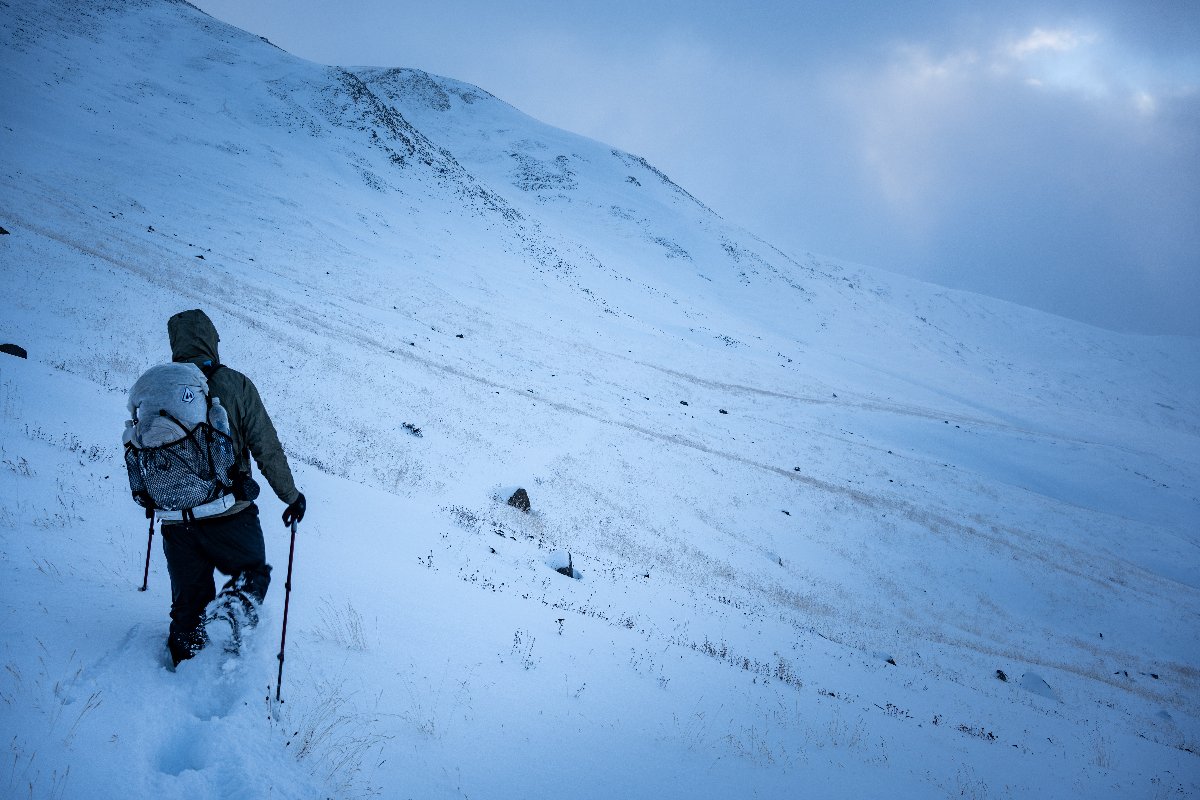
I got up into the northern part of the AT, New Hampshire, and just the trail was covered completely, and ice—like, feet of thick ice. And the trails there are just super steep anyway, but then to have it covered in this sheet of ice, where I’d have to just grab onto trees and then use my micros spikes, dig ’em in, and it would take—a lot of it, you’d be moving at less than one mile an hour. So, think moving down an icy slope like that, you’d move your feet down, kick in new steps, and then grab some more trees on your side and then kick more steps and just move down like super, super slowly and tediously.
I think I did that for about 200 miles, and then postholing through snow. Places where it was more open and getting more sunlight, you’d sink down into your knees. [. . .] So you’re floundering through this waist-deep snow, trying to follow the little dot on FarOut, trying to figure out where the trail actually is and yeah, super slow and tedious.
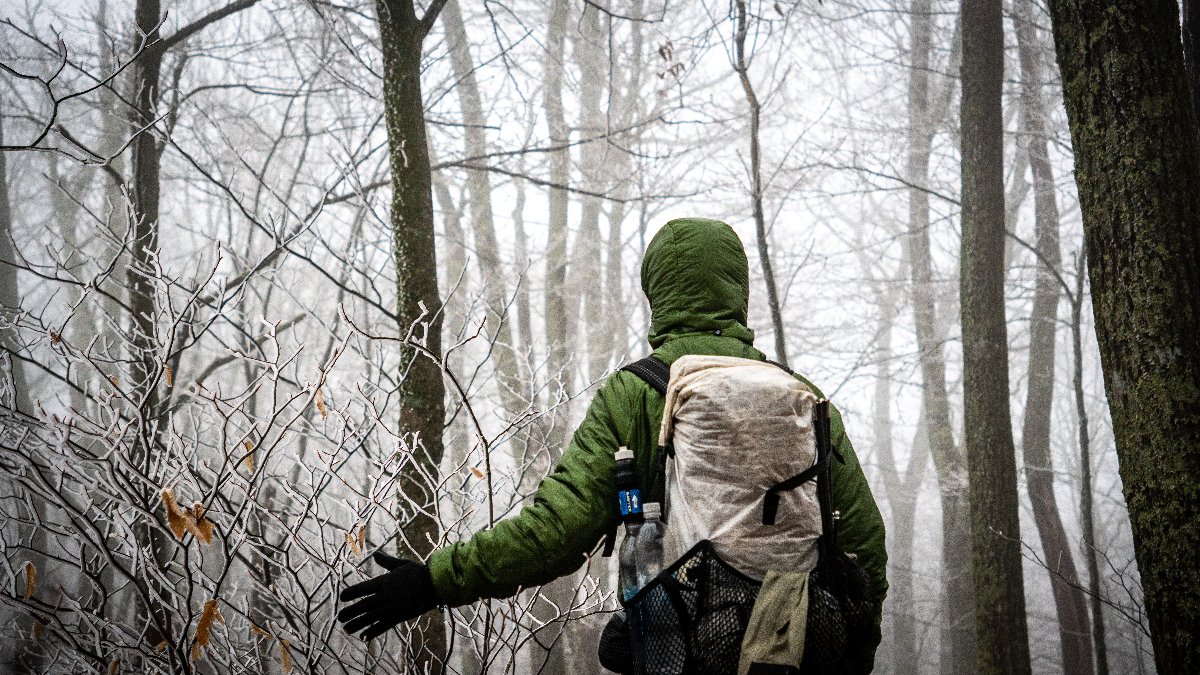
On the AT I pushed really hard, and I think before I got to the really heavy snow I got up to 28, almost 29 miles a day average. And that was pushing over 16 hours every day, closer to 18-20 a lot of days. [. . .] So when I started, I thought I was going to get off. Most people get off trail in Vermont or so when they’re doing The Calendar Year, and then go over to hike the desert section of the CDT or just go start on the desert section of the PCT. And I figured that’s what I would do, but I was pushing so hard and felt so strong that I decided to just push through.
I think it was just the most difficult hiking of that entire year. And it felt like that was why I was out there. It required all of my physical and mental fortitude to be able to stay out in those conditions and push through. Because I remember coming into town somewhere, it was like Gorham or somewhere and talking to a friend and saying, “it feels like I’m just taking a breath. It feels like the whole time I was out there, I was holding my breath,” because that’s kind of the state that you’re in up on those mountains. It’s like you’re holding your breath as you move down the mountain, because it’s one false step and you’re going to slip and fall, and that’s the feeling out there. One false move and it’s going to be something catastrophic.
It was just that sense of relief getting into town, not even realizing how much stress I was holding. That was kind of that whole trail, just pushing super, super hard and pushing through all this ice and snow and then being able to actually do it. That was really cool. And that was what I was after . . . [It] was like the AT answered my question of, how hard can I actually push myself? And the other two [thru-hikes], they didn’t have that same flavor of me pushing myself to the limits anymore, because that was, yeah, the AT was just really special in that way for this year.
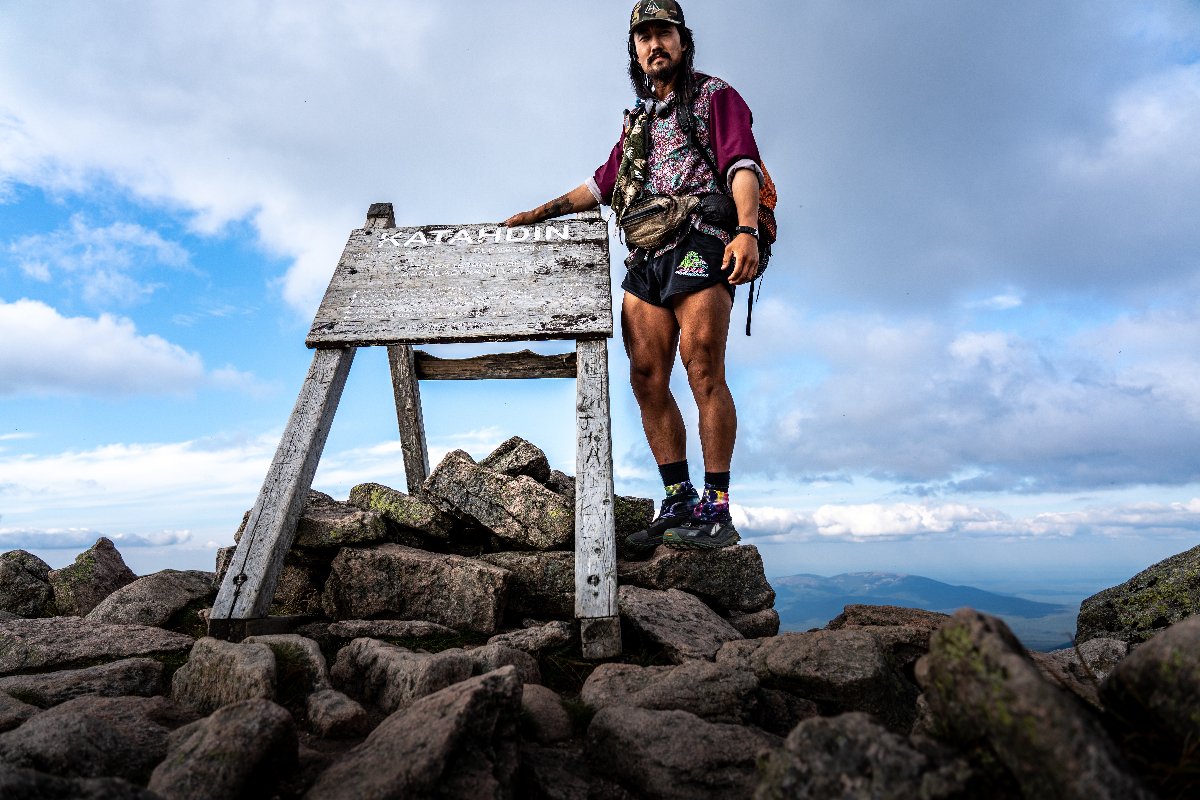
CHECK OUT THESE OTHER YEAR-END STORIES FROM OUTDOORS.COM:
- The Year in Outdoors: A Look Back at 2023
- The Year in Outdoors: People of the Year 2023
- The Year in Outdoors: 2023 Saw Some Great New Gear—Here Are a Few Favorites
- The Year in Outdoors: Our Top 10 Stories in 2023 (Plus 10 You May Have Missed)
- The Year in Outdoors: New Mosses, Mushrooms, and Other Forest Things Discovered in 2023
- The Year in Outdoors: New Animal Species Discovered in 2023
- The Year in Outdoors: Our Favorite Creators, YouTubers, and Podcasters of 2023
- The Year in Outdoors: These Were Some of the Most Heartwarming, Epic, and Outrageous Outdoor Videos of 2023
Outdoors.com: Over the course of your thru-hiking career—the ultras, and the biking and all that—what do you think that has given you in terms of the rest of your life and your future?
Quadzilla: I think the reason I keep coming back to doing these long trails and adventures is because I like who I am. There’s a certain point on the trails where it feels like it’s my most authentic self. And I think a lot of that has to do with overcoming fears. A lot of my twenties was really defined by anxiety and fear and depression, and especially the first couple of months on a trail, for me, it’s like I’m finally the person that I really want to be when I’m out there. It’s really easy to just get stuck in my house, in my head, and on the computer, and I’m not going outside. Anxiety creeps up and fears creep up.
Every trail, I come back a little more like that person that I really want to be, and that’s cool.
Jack “Quadzilla” Jones
So the trails, for me, it’s like a way to confront and overcome those things. And on the trail, I really become the version of myself that I want to be all the time. It’s like, you get into these different states of consciousness out there. Because when I work on my videos now of my hike last year, even though I did that, I can’t imagine doing that right now. Just because I’m in a totally different state of consciousness. I haven’t been out on the trail for months and my mind hasn’t been hardened like that. You can only get to that kind of mental state by being on the trail for that long. I’ve lost a lot of that now, but little bits I take with me. Every trail, I come back a little more like that person that I really want to be, and that’s cool.
And before the first time on the AT versus after, I noticed one big difference was I was just much more okay being who I was [. . .] And I can see that play out now in my life. Before 2016, before that first hike, it would’ve seemed so scary to take on that job working as a wildland firefighter, where that’s one of the most dangerous jobs that exists and one of the most physically grueling, but it’s like, having had those other experiences, no, I can do this probably, and I can give it a shot.
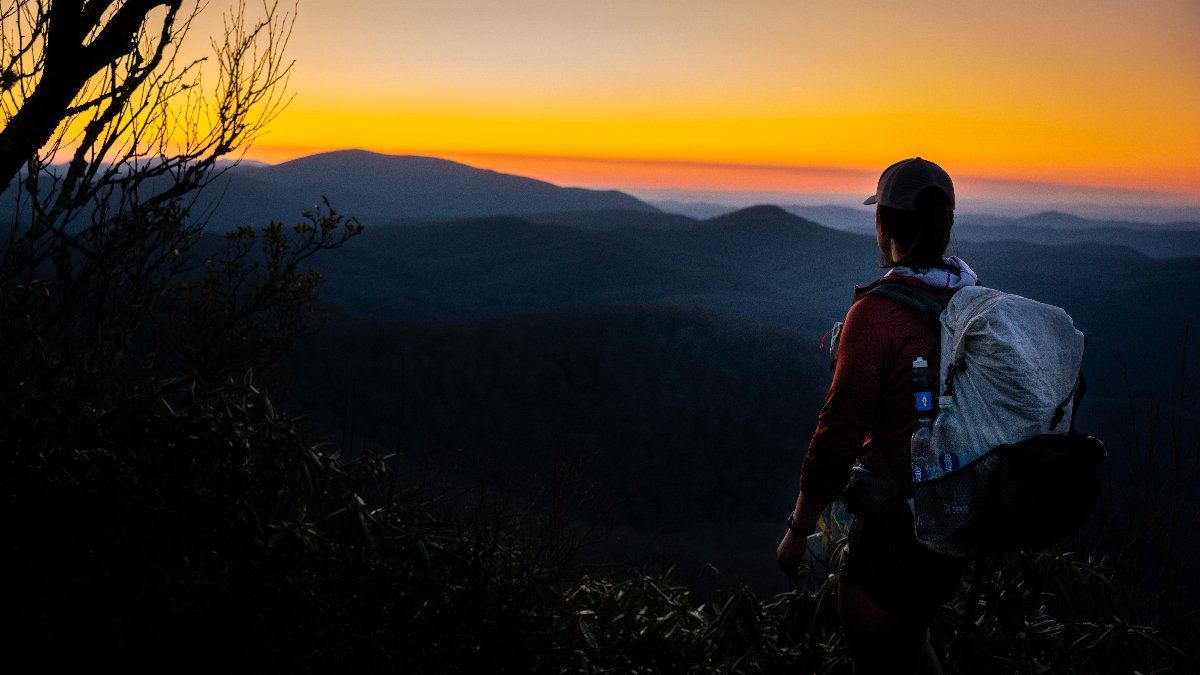
And then after The Calendar Year, I’d always wanted to live in Asia and learn Muay Thai. And it was just like, well, we have the opportunity, so let’s go do it. But looking at me of six, seven years ago, [. . .] I think it would’ve been much more likely for all these fears to have stopped me, or it wouldn’t have even been an option to come to Asia.
But because of these experiences on the trails now, fear doesn’t limit me nearly in the same way as it did before. [. . .] And, of course, you’ll feel fear and anxiety, but you learn that it’s okay, whatever obstacles come up, you can figure it out and it doesn’t have to stop you in the same way. And I think that’s the biggest thing. The trails teach me to not be limited by these emotions anymore. That makes life so much more expansive.
Quadzilla offers one-on-one personal training for aspiring thru-hikers, including physical, mental, and nutritional advice. He can be found on Instagram, YouTube, and TikTok.
